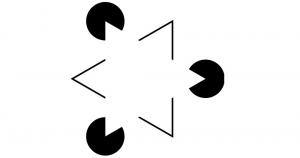The 3 Levels of the Language (and its characteristics)
Language is one of the most important capacities of the human being., since we are social animals that need to be able to communicate with each other in order to coordinate and survive.
Language implies the creation of a series of symbols shared among the members of a group that allows the transmission of ideas, intentions, emotions and needs among different individuals. And one of the most relevant types of language is oral language.
But there is a wide variety of languages and languages with great differences between them, and even within the same language we will find different variants and ways of expressing themselves. In this last sense It should be noted that we can find different levels of language or language, which we will talk about throughout this article.
What are the language levels?
They receive the name of levels of Language (or language) the set of styles or ways of communicating through language. This name can refer to different ways of classifying language ability or its use, such as the level of learning and knowledge of a language (B1, B2, C1, C2…) or, in the case at hand, the different registers used by users of the same language in relation to their contextual situation and cultural.
In this sense, it should be borne in mind that there are many factors that determine the type of record used. The socio-educational level is a very relevant one, since, for example, illiterate people or people with few studies will have much more difficulties in being able to use more sophisticated registers.
However, it is not the only one: the historical moment, the adaptation to specific contexts and situations or even the personality of the speaker can influence the type of register used.
The three great levels
Although, as we have said, we could classify the use of language at different levels based on a wide variety of criteria, if we stick to the level of correctness and the cultural baggage of the speakers and the type of language that we use in different contexts we can consider a total of three great levels of language. Specifically, the following.
1. substandard level
The substandard level is considered as the level of the least sophisticated language. and the one that requires less formal knowledge to be used. The use of this level incurs multiple errors and idioms, it usually uses abbreviated forms of words and phrases.
They generally include the use of slang and regional variants (not dialects), as well as lexical and syntactic errors. It is usually used among people from close circles or with low educational levels. Within this level we can find two large sublevels
1.1. vulgar language
This type of language is characterized by its great simplicity and little by great simplicity and lack of ornamentation.. Many of its terms are not part of the dictionary, and often include limited lexicons, short and partial phrases and a large number of vulgarisms and errors that do not seek to be corrected.
Although understandable, a speaker from another region may have difficulty understanding all of the messages. It is also common for fillers to be used and for there to be serious word ordering problems, as well as displacements stress or in syllables or use of wrong graphemes and phonemes (vowels and consonants are used that are not those that make up the word per se).
It is often a speech with little adaptation to the environment and the context: the way of speaking is almost always the same and does not adjust depending on the situation.
1.2. popular language
The so-called language of the people is part of the substandard level (although it integrates various elements of the standard language), and in this case we observe a much more correct and accepted use by the majority of speakers, although informal and not very elaborate. Although limited in lexicon, it also presents great generativity when talking about the different constructs.
It tends to use many adjectives and proverbs, save constructions and sentences (the phrases are reduced as far as possible) and abuse appeals to the listener.
It is often a type of language used by people with a slight educational level, in older people or in young people, having a fairly widespread informal use.
2. standard level
We understand by standard level that which most of the population recognizes as correct, which follows the lexical, syntactic and morphological rules of the language in question and which serves as a basis and example of what a specific language is like. It requires a certain level of training in order to learn the use of language and its rules.
Within the standard level we can find two sublevels or subtypes of language.
2.1. Colloquial language
It is the type of record that most of the population usually uses in their day to day and spontaneously. It is a correct language that follows the main spelling, syntactic and grammatical rules, although there may be small errors.
It uses interjections and is quite lexically rich, although it tends to be used informally and tends not to be flowery or ornate. Highly practical and expressive, it usually has elements of subjectivity and emotionality.
2.2. cultured language
The cultured language is a sublevel of the standard level that implies a high level of correctness in all its aspects.. It usually implies a relatively high level of knowledge and mastery of the rules of the language. It has a fairly rich lexicon and elements of abstraction and ornamentation can be observed, and it is a type of formal communications.
Cultured language, although it is generally considered standard, has characteristics that bring it closer to the super-standard level and that sometimes place it at said levels of language.
3. super standard level
The most advanced and sophisticated language level is the superstandard level.. This level is characterized by the use of a very correct and ornate language, as well as by being used in a restricted manner in certain fields or contexts. Its use is not common on a day-to-day basis and is restricted to certain situations, in addition to which it requires a high educational level to be able to understand it.
The vocabulary is extensive and cultisms are often used. She often looks for the expression of beauty through the word. Among the different sublevels that we can find, it is possible to highlight the following.
3.1. poetic language
Poetic language is one whose main function is the expression of emotions and feelings through not so much the content of the word but its form.. Although what is said may be relevant, the way in which it is expressed is much more relevant, seeking to generate beauty with the use of language.
- It may interest you: "The 23 Best Short Poems (by Famous and Anonymous Authors)"
3.2. Scientific-technical language
A subtype of superstandard language in which the transmission of objective information prevails, with a clear and orderly presentation of the information and by the use of specific terminology of a field of knowledge. Understanding the messages emitted at this level of the language implies having highly specialized knowledge in a specific field, or at least notions of very specific fields.
Bibliographic references:
Areiza Londoño, R and Tabares Idárraga, L.E. (2003). Social variables and their relationship with language use. Journal of Human Sciences, 9 (32).
Caballero Munoz, D. (1993). Some psychosocial considerations on correct language and vulgar language. Open Classroom, 62: 157-168. Oviedo University.


